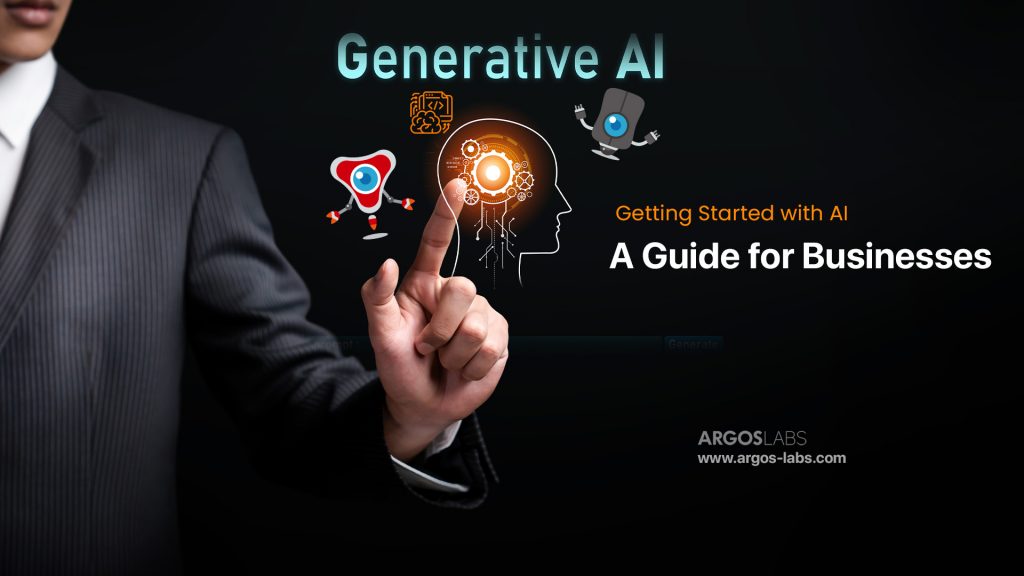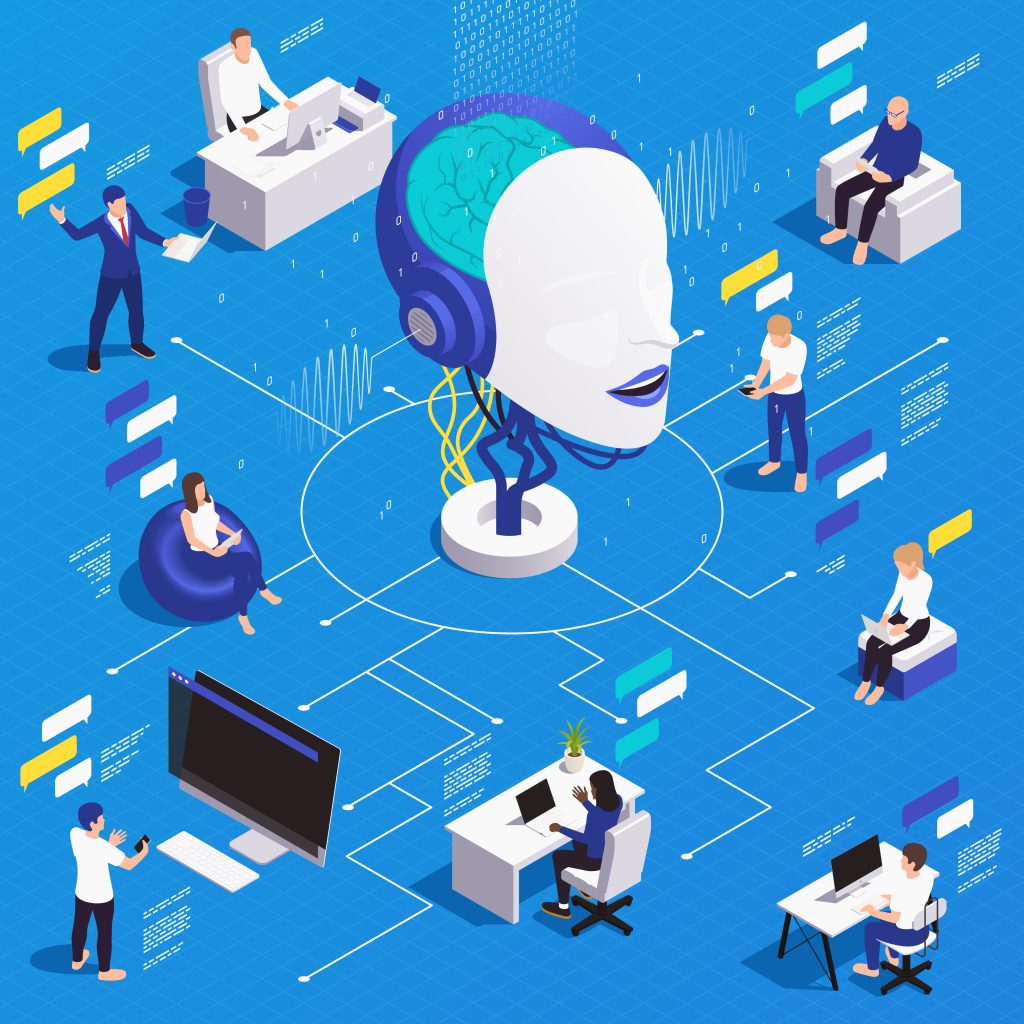
As businesses across industries continue to embrace digital transformation, integrating Artificial Intelligence (AI) has become a key driver of growth and innovation. AI technologies can enhance decision-making, improve operational efficiency, and provide personalized customer experiences. If you’re ready to take the leap into the world of AI, this guide will outline the essential steps to get started and successfully implement AI in your business.
Understanding the Basics of AI
Before diving into AI integration, it’s crucial to understand the fundamentals of AI and its various applications. AI refers to the simulation of human intelligence in machines programmed to think and learn like humans. Key components of AI include:
- Machine Learning (ML) A subset of AI that enables systems to learn from data and improve over time without explicit programming.
- Natural Language Processing (NLP) Allows machines to understand and respond to human language, facilitating interactions between humans and machines.
- Computer Vision Enables machines to interpret and make decisions based on visual data, such as images and videos.
- Robotics Combines AI with physical machines to automate tasks and enhance productivity.
Understanding these components will help you identify the right AI solutions for your business needs.
Step 1: Identify Business Goals and Use Cases
The first step in integrating AI into your business is to identify your goals and potential use cases. Consider the challenges you face and how AI can help address them. Common applications of AI in business include:
- Customer Service Streamlining Frequently Asked Questions or Very Key Guidelines for instant information access and support through automation.
- Data Analysis Utilizing AI to analyze large datasets for insights that inform decision-making.
- Sales and Marketing Leveraging AI for personalized marketing campaigns and lead scoring.
- Supply Chain Management Enhancing inventory management and demand forecasting through predictive analytics.
Clearly defining your goals will guide the selection of AI technologies and solutions that align with your business objectives.
Step 2: Assess Data Readiness
Data is the foundation of AI. Before implementing AI solutions, assess your organization’s data readiness. Consider the following:
- Data Quality Ensure that your data is accurate, complete, and relevant. Poor-quality data can lead to inaccurate AI models and unreliable insights.
- Data Availability Identify the data sources you have access to, including internal systems, databases, and external data providers.
- Data Privacy Comply with data protection regulations, such as GDPR or CCPA, to ensure the ethical use of customer data.
If your organization lacks sufficient data, consider investing in data collection and management processes to build a solid foundation for AI implementation.
Step 3: Choose the Right AI Tools and Technologies
With your goals defined and data assessed, it’s time to select the right AI tools and technologies for your business. Consider the following options:
- Pre-built AI Solutions Many companies offer off-the-shelf AI solutions that can be easily integrated into existing systems. Examples include AI chatbots, CRM systems with AI capabilities, and analytics platforms.
- Custom AI Development For more complex use cases, consider developing custom AI solutions tailored to your specific needs. This may involve collaborating with AI developers or data scientists.
- Cloud-based AI Services Many cloud providers offer AI services that allow businesses to access powerful AI tools without significant upfront investment. Services like Google AI, AWS AI, and Microsoft Azure provide machine learning capabilities, NLP, and more.
Evaluate your budget, technical expertise, and business needs when selecting AI tools and technologies.
Step 4: Build a Cross-Functional Team
Successful AI integration requires collaboration across various departments. Form a cross-functional team that includes members from IT, data science, marketing, sales, and operations. This diverse team will bring different perspectives and expertise to the project, ensuring a comprehensive approach to AI implementation.
Consider hiring or training data scientists and AI specialists who can lead the development and deployment of AI solutions. Continuous learning and upskilling of existing employees in AI-related areas will also contribute to successful integration.
Step 5: Start with Pilot Projects
Before fully rolling out AI solutions, consider starting with pilot projects. Pilot projects allow you to test AI applications on a smaller scale, evaluate their effectiveness, and gather valuable insights for broader implementation.
- Define Success Metrics Establish clear success metrics to measure the impact of the pilot project. This could include metrics like improved customer satisfaction, increased sales, or reduced operational costs.
- Gather Feedback Collect feedback from stakeholders involved in the pilot project to identify challenges and areas for improvement.
- Iterate and Optimize Use the insights gained from the pilot project to iterate and optimize your AI solutions before a full-scale rollout.
Step 6: Monitor and Evaluate Performance
Once you’ve implemented AI solutions across your organization, continuous monitoring and evaluation are crucial to ensuring their effectiveness. Track key performance indicators (KPIs) related to your AI initiatives, such as:
- Customer Engagement Measure the impact of AI on customer interactions and satisfaction.
- Operational Efficiency Analyze improvements in productivity and cost savings.
- Revenue Growth Evaluate the effect of AI on sales and revenue generation.
Regularly review performance data and make adjustments as needed to optimize your AI initiatives and achieve your business goals.
Step 7: Foster a Culture of Innovation
Integrating AI into your business is not just a one-time project; it’s an ongoing journey. To fully leverage the potential of AI, foster a culture of innovation within your organization. Encourage employees to explore new ideas, experiment with AI technologies, and stay informed about emerging trends in AI.
Provide opportunities for continuous learning and professional development in AI-related fields. By creating an environment that values innovation and embraces change, your organization will be better positioned to adapt to future advancements in AI technology.
Conclusion
Integrating AI into your business is a transformative journey that can unlock new opportunities for growth and innovation. By following these essential steps—defining your goals, assessing data readiness, selecting the right tools, building a cross-functional team, starting with pilot projects, monitoring performance, and fostering a culture of innovation—you can successfully navigate the path to AI integration.
At Argos Labs, we are dedicated to helping businesses harness the power of AI for growth and success. Our expertise in AI solutions empowers organizations to unlock valuable insights, enhance customer experiences, and drive operational efficiency. Ready to take the next step in your AI journey? Let’s get started!


